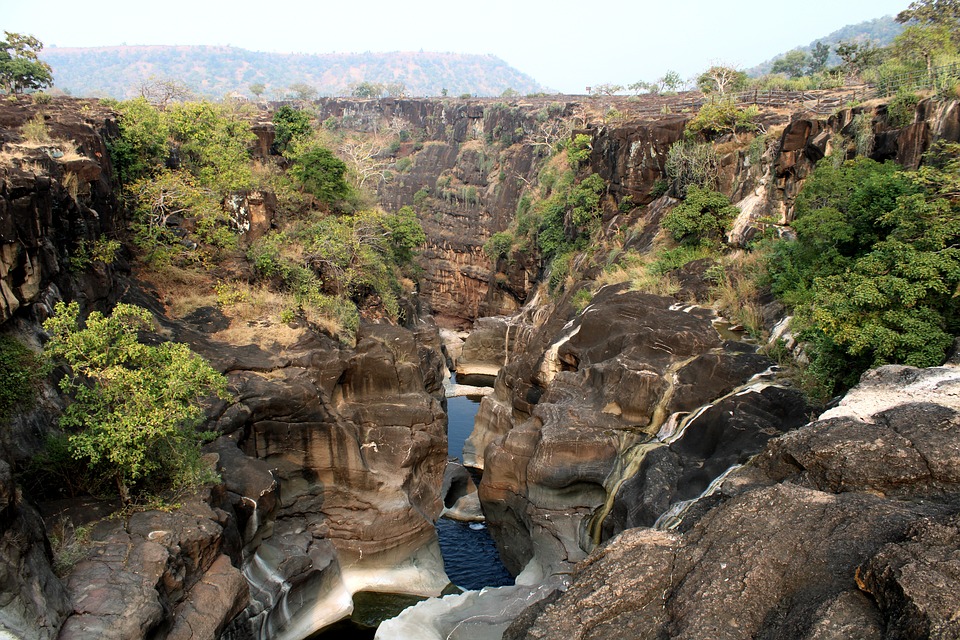Introduction to The Rock-cut Architecture of Ajanta
(By Anannya Banerjee)

Ajanta is a horseshoe-shaped place located in the Western Ghats mountain range of the Deccan. This renowned and well-famed cave was built under the patronage of King Harrison, who ruled from 460 AD to 478 AD. Discovered in 1819, by a team of British army officers on tiger hunting, the site consists of a series of thirty carved caves, some unfinished, which were excavated in a short but intense time. Many of the Ajanta caves cut into the vertical mountains just above the Waghora River. This magnificent picturesque scenario of the cave is nothing but simply an example of major achievements in architecture, sculpture, and painting. There are several of them.

There are halls, shrines,
monasteries, and vihara of Mahayana
Buddhist monks who lived there. Already accessed The riverfront, the caves, are
numbered at the entrance from the entrance by individual stairs Now connected
by a roofed path. Compared to earlier rock-cut architecture, the Ajanta Caves
are richly decorated. Sculpture and relief work intricately carved pilasters
and cornices. Originally still a copy of Wood architecture, they show the
evolution and development of the technique of integration Architecture,
including painting and sculpture, is an integral feature of Indian
architecture. Some caves have exquisite murals on the inside, on the walls, and
on the decorated stones Ceiling murals and sculptures depict scenes of the
Buddha and Bodhisattvas and his life Illustrated in the birth story. This
depicts the tell of Jataka.

Details from
a wall mural depicting a scene of the cosmic birth - Vishvantara Jataka, telling
the story of a prince who gave up everything in alms. The scene provides
interesting information about contemporary wood architecture, clothing habits,
and so on Insights into court life.
Mural
Techniques
The
unconventional stone surfaces of the cave were first covered with clay plaster,
then with lime. Wash before drawing the sketch described in red which was
allowed to dry. Colors used local minerals were made to paint murals on walls
and ceilings. A clay and iron oxide the mixture was a source of red and yellow.
Lapis lazuli imported from Afghanistan was used blue choline, lamp-black, and
white lime was also used. Often it was color modulation rather than a solid
outline that was used to create a form, which then the shadows and highlights
are emphasized by the technique. As a representation of the nozzle background
as a lower part and upper part of the painting (a technique used earlier
Sculpture relief form), continued in the Ajanta mural. Increasingly use of
perspectives, the way the buildings are depicted is clear.

Hinayana and Mahayana Buddhism
Hinayana (or
lesser vehicles), an earlier form of Buddhism, believed that attainment could
be achieved through Buddha-hood or enlightenment. Only a few Mahayana (or
Greater Yana) Buddhism acknowledges that the seeds of Buddhism are present in
every human being, and this can be achieved by praying, meditating, and
following the eightfold path. The Buddha was not represented
Hinayana is
a form of a man in Buddhism but symbolizes like a stupa, Sodhi tree, or lotus.
Mahayana Buddhism Gave the Buddha a human form and created a rich vocabulary
representing not only the Buddha but the Bodhisattvas.

The
crescent-shaped canyon of the Waghora River created an ideal setting for
Buddhist monks who wanted to retreat. Section caves, monasteries, and prayer
halls were carved into the hills. The caves seem to have been abandoned about a
millennium ago, in 1819, a team of British officers accidentally discovered
them.
There are
significant differences in the layout of ceilings and murals on the walls.
Ceiling paintings usually have a grid pattern with floral and abstract
patterns, while murals on the walls are narrative. The ceilings are bright
colors with a lot of use of white paint, perhaps so that the light can be
reflected better (only the sun's scattered rays enter the cave). The murals on
the walls are mainly earthy tones; White is rarely used. Many styles and
techniques can be identified in the Ajanta murals, sometimes in the same
composition, suggesting that the larger murals were a collaborative effort.

Site plans
for the Ajanta Caves, most of which were monasteries with cells placed around
the central precinct. The sculptures in the Ajanta Caves tell stories from the
life of the Buddha to his pre-incarnation, which are often obtained from the
Jatakas. The sculpture from Cave 226 shows the Parinirvana Buddha-meter statue
sitting between two shawl trees on its right side. The celestial beings above
and the followers of the Buddha below are mourning his death.

Comments
Post a Comment